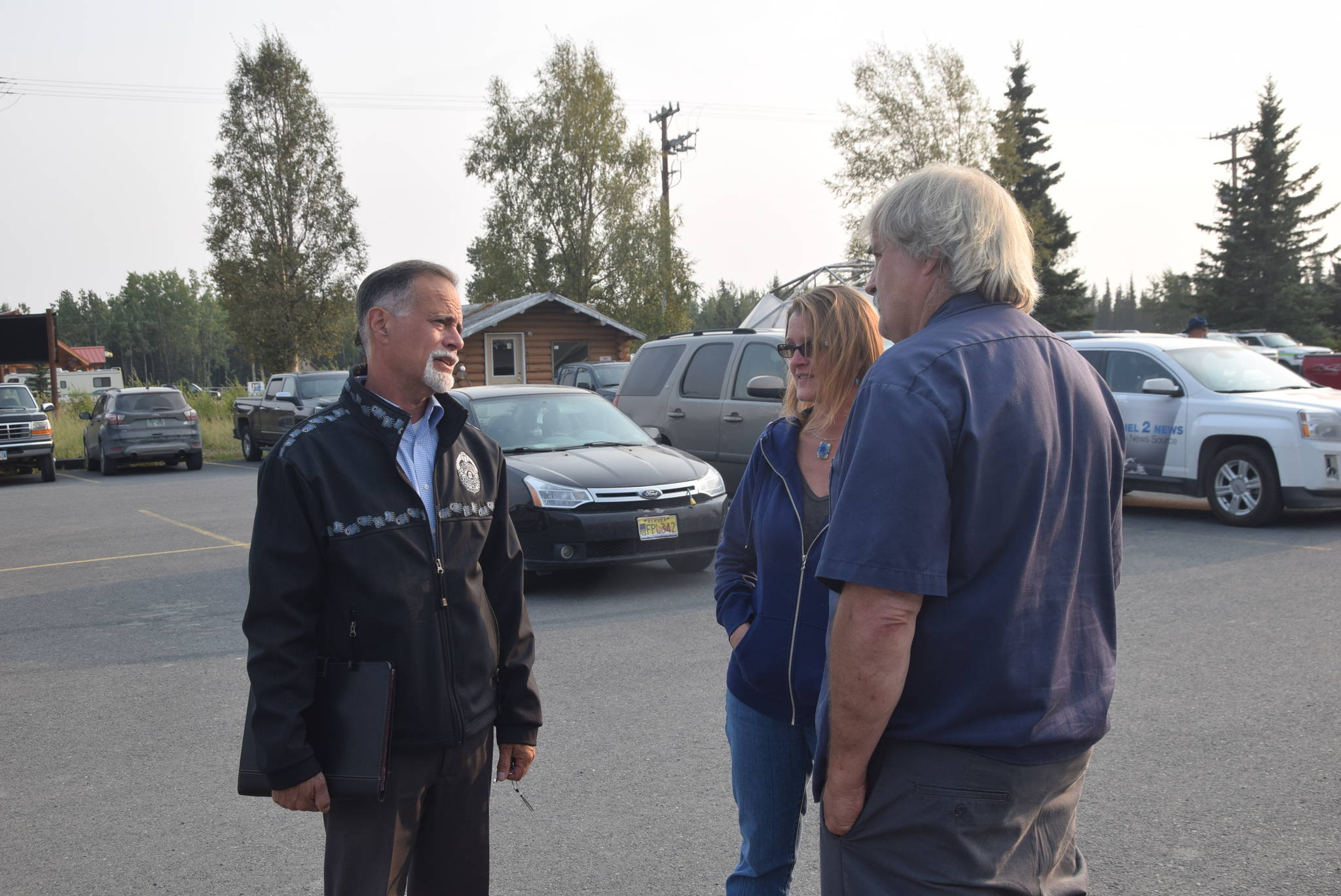Residents of Cooper Landing got a break from heavy smoke conditions Thursday.
The Great Basin Incident Management Team reported clear air in Cooper Landing Thursday afternoon, which allowed aviation resources to be used in suppression efforts for the Swan Lake Fire.
The Sterling Highway didn’t experience any closures on Thursday, which was a change of pace from recent days. Most of the closures have been a result of heavy smoke conditions that impair visibility, especially when the smoke mixes with early morning fog. Highway conditions are still subject to change. The latest information can be found at kpboem.com or 511.alaska.gov.
During a community meeting at the Sterling Community Center Thursday night, fire managers gave an update on the daily operations and priorities of the incident management team. After the updates, residents had the opportunity to ask questions and voice their concerns. Many of the residents’ concerns were focused on the intermittent highway closures.
Kim Sterling, from Sterling, lives just inside the portion of the highway that has been experiencing the closures and was worried about what would happen if the road closed while he was at work in Soldotna. It hasn’t happened to him yet, but if he happened to be on the wrong side of the line during a closure, Sterling feared that he would be unable to get to his house due to congested traffic. Sterling suggested having a pilot car specifically designated to escort local residents during those situations so that people can still access their homes.
Phil Whittemore, also from Sterling, echoed the concerns about the highway closures. Whittemore said that some of the local businesses have had trouble keeping their shelves stocked because the trucks carrying the goods are unable to reach the central peninsula.
“I’m fortunate enough to have a plane in case I need to fly to Anchorage for food or medicine,” Whittemore said. “But not everybody has that option.”
Sen. Peter Micciche, R-Soldotna, attended the meeting and said that he and the other peninsula legislators will be presenting the borough’s disaster emergency proclamation to Gov. Mike Dunleavy Friday in the hopes that he makes state resources available for relief efforts. Micciche said that he expects the governor to be supportive of the efforts.
“We’ve got some specific requests in there. For example, the Type 1 team doesn’t direct traffic, so we’re hoping to get some DOT resources down here to make that happen,” Micciche said. Micciche said that he also encouraged the incident management team to hold more frequent community meetings in order to keep people informed.
Helicopters spent Thursday dropping water on an area south of the Kenai River and west of Cooper Landing, according to the latest update from the incident management team. Public Information Officer Michael Davis said on Thursday afternoon in an interview with Clarion that this area has been difficult to reach for crews on the ground due to recent flooding.
“All of the commercial fisherman are pulling their tours out of there, and they’re the experts around here so we’ve been following their lead,” Davis said.
Crews successfully crossed the river Thursday and began establishing control lines in that area to prevent the fire’s spread to the east on the south side of the river.
The control line on the western perimeter of the fire has been completed from the Sterling Highway south to Skilak Lake, and Davis said that crews are now bringing in miles of fire hose to “plumb” that line. Plumbing the line creates a junction every 50 to 100 feet that will allow firefighters to spray water anywhere up and down the line and defend it from fire growth.
Davis said that wind has started to push to the west and will test this completed line.
Meanwhile, the control line that was established weeks ago on the north side of the highway has been holding, and the latest monitoring has not shown any growth in that area.
Davis said that the incident management is not lacking for resources, personnel or equipment due to the high priority of the Swan Lake Fire.
“Basically the only fire activity in the U.S. is here in Alaska, and this is the number one fire in the nation, so we’re able to pull any resources we need from the Lower 48,” Davis said. Davis said that the incident management team has been conscious of the taxpayer money used to manage the fire.
So far Swan Lake Fire operations have cost about $25.4 million, according to data from the National Interagency Coordination Center Incident Management Situation Report.
Because no big wind events are forecasted for the area, Davis said that the management team is confident that crews on the ground will be able to establish control lines without significant growth. The latest infrared mapping puts the fire at 142,542 acres.
Davis is from Colorado and has been a public information officer for nearly a decade, as well as an EMT and firefighter in his hometown of Hotchkiss.
Davis said that what makes managing the Swan Lake Fire unique is the number of high priority targets that require protection, such as the communities of Sterling and Cooper Landing, the Enstar gas line, the Moose research center and public use cabins in the area.
“Every square inch is worth fighting for,” Davis said.

